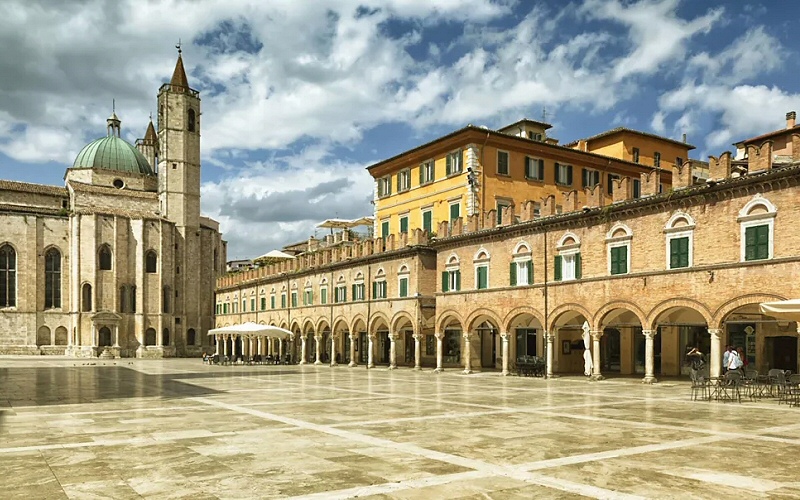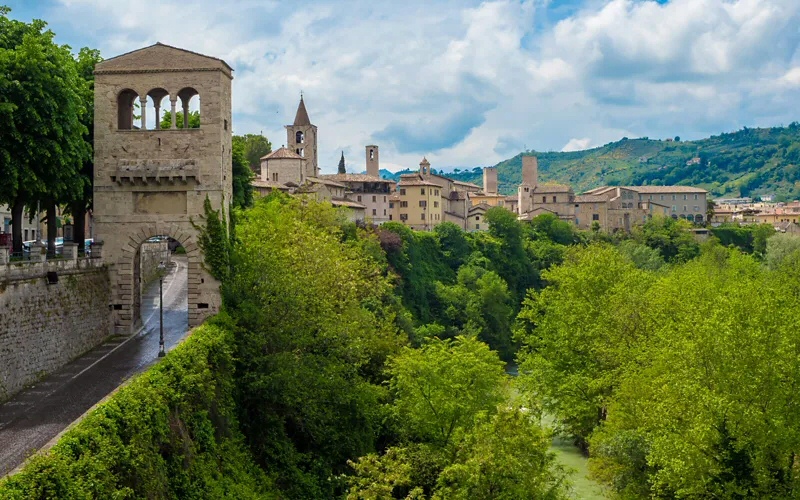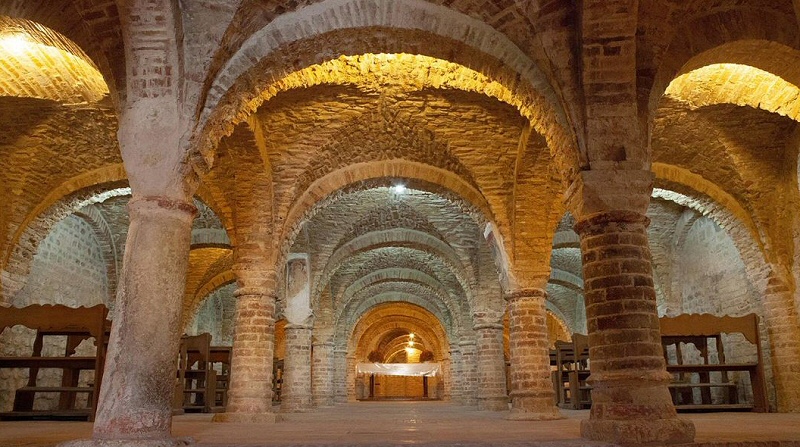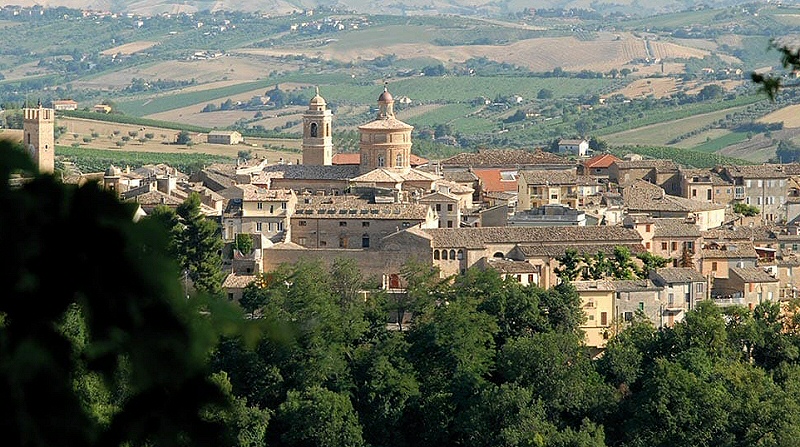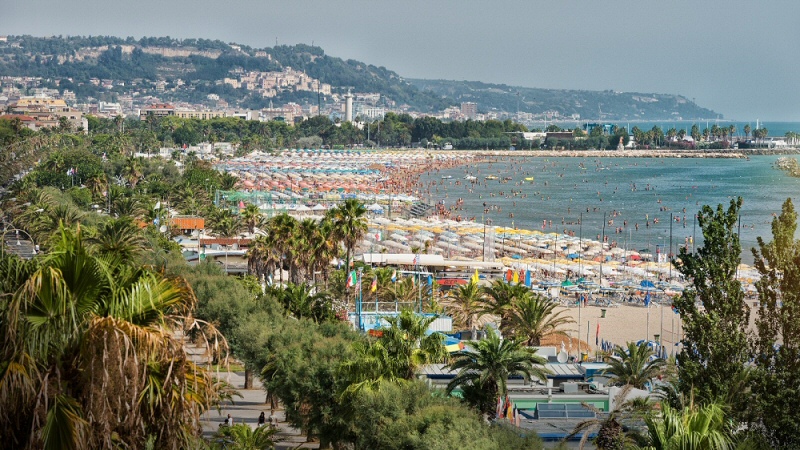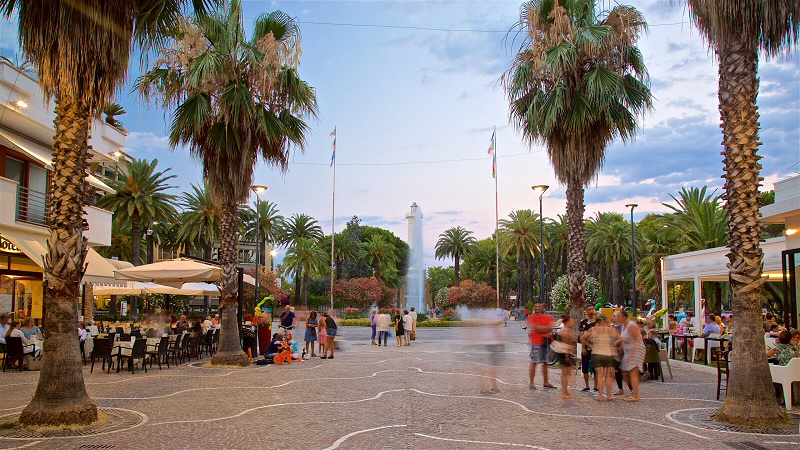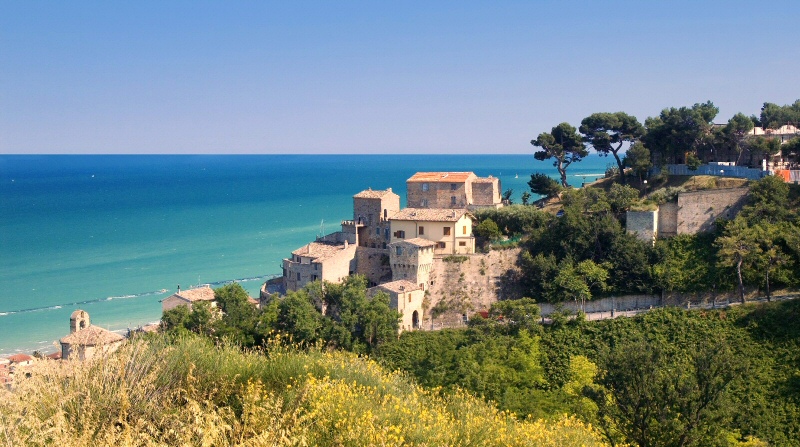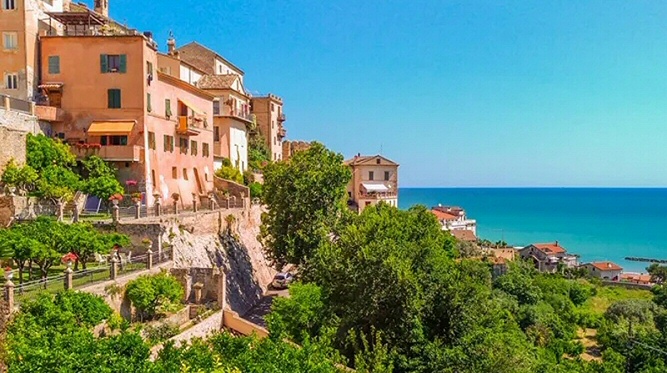...in the surroundings
Ascoli Piceno
Whether it's a stop on a trip along the Marche coast or the destination of choice for a sightseeing trip, Ascoli Piceno is a place where history, art and food and wine coexist, telling of the beauty that Italy has to offer.
It may be the small size of the historic center or the ancient travertine buildings, but Ascoli Piceno still retains the unparalleled charm of central Italian villages where time seems not to have passed. The stately and elegant squares, the historic churches full of treasures, and the towers and bell towers that dot its skyline. In Ascoli Piceno culture and popular fascination will only steal your heart.
Offida
Offida, an ancient village enclosed by 15th-century castle walls, is listed among The Most Beautiful Villages in Italy. Set on a rocky spur between the Tesino and Tronto valleys, it is known for the laborious and patient art of the delicate bobbin lace, an ancient tradition to which one of the town's main museums is dedicated.
The vast scenic square at the entrance to the old town welcomes the remains of the 15th-century Rocca, at the foot of which stands the Monument to the Lacemakers. Bobbin lace-making is still widespread: in fact, it is not uncommon, walking through the historic center, to catch a glimpse in the half-light of the atriums of houses of ladies intent on working with small wooden bobbins. The bobbin lace museum (which has a special path for the visually impaired), is located inside the 19th-century De Castellotti-Pagnanelli palace, which, since 1998, has also housed the "G. Allevi" archaeological museum, the Museum of Popular Traditions and the Municipal Picture Gallery, thus constituting a true cultural hub.
San Benedetto del Tronto
Also called the Riviera of the Palms, a term later extended to the neighboring resorts along the coast, it attracts visitors from all parts of Italy and Europe; it is one of the main tourist resorts in the Marche region, thanks to its wide sandy beaches framed in the fascinating backdrop of palm trees and oleanders, capable of evoking wonderful exotic scenery.
The Promenade is bordered by lush gardens, a pine forest, tennis courts, a skating rink, and a building, the Palazzina Azzurra, the town's historic venue, on the mouth of the Albula stream, which determines the end of the first stretch, south of which the more properly tourist area begins, with beach resorts on one side and villas and hotels on the other side of the street.
Grottammare
Grottammare is also known as the "Pearl of the Adriatic," and this name already carries with it the seafaring soul of the town. A longtime travel destination on the Riviera of the Palms, for more than three centuries it has been known for the beauty of its landscape, its sea and the historical, artistic and cultural memories that visitors can discover during their stay.
A splendid beach lined with palm trees, orange trees and oleanders welcomes travelers, but the heart of the marina is Kursaal Square: located north of the town, it faces directly onto the beach and then flows into Viale Marino, where palm trees and porphyry and Carrara marble paving enhance the beautiful Art Nouveau villas of the early 20th century. A town to admire but also to live in, Grottammare, which, with its many initiatives, offers a rich program of events and happenings.
